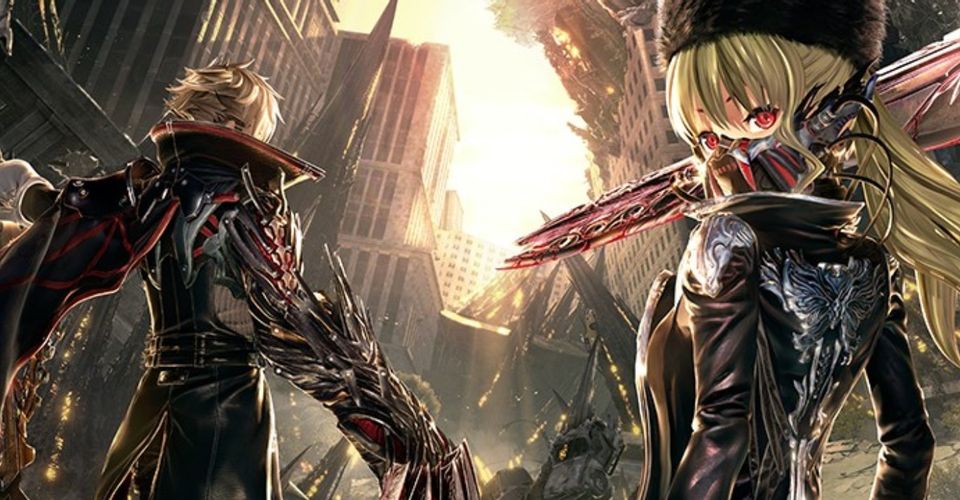Code Vein Review: More Like Dud Souls

Code Vein is another botched attempt at creating a Dark Souls clone that fails at capturing the beautiful world or tight gameplay of its inspiration.
Code Vein is an action RPG that tries to shake up the formula established by the Dark Souls series by adding in co-operative elements and a greater focus on storytelling, but what is left is an unrewarding experience that is punishingly difficult, rather than a challenging and rewarding one.
Code Vein is set in a post-apocalyptic world where the ruins of civilization have become home to vampiric creatures known as Revenants. The Revenants who continually give in to their bloodlust will eventually transform into monsters known as Lost, who stalk the streets of the dead cities in search of victims. The game’s main character is an amnesiac Revenant with the power to see the memories of others, which are found in crystals scattered around the world. The player teams up with a group of Revenants who are protecting the remnants of society from the Lost, while also seeking out their missing memories. The Souls series uses a very gothic aesthetic for its visuals, whereas Code Vein uses a more elaborate anime aesthetic.
Code Vein is heavily inspired by the Dark Souls series (as well as Sekiro: Shadows Die Twice), with the player dropping their experience points when they die, reclaiming them if they return to the spot before perishing again. Code Vein uses a character class system, with the protagonist being given access to three at the start of the game and discovering more over the course of the story. There are a lot of character customization options in Code Vein and players can create a truly bizarre-looking avatar for their play-through.

Code Vein is meant to be a co-op experience, with the single-player mode allowing the player to take an NPC ally into battle with them. These computer-controlled allies work surprisingly well and they have the ability to revive the player if they fall in battle, though this power has a lengthy cooldown and cannot be heavily relied upon. The combat system in Code Vein allows the player to drain the blood of their enemy by performing backstabs or a draining attack in battle that has an incredibly slow start-up animation. The draining moves give the player Ichor, which is the equivalent to the MP meter of the game. There are certain classes that heavily rely on Ichor to power their special moves, so the player needs to balance how often they use their strongest attacks with the risk of going in for a drain.
The single biggest issue with Code Vein is its unbalanced difficulty which heavily favors the enemy in most situations. The player character has almost no invincibility frames and can be easily stun-locked, even when dodge rolling. While the enemies have no limit on how quickly or often they can use their moves. When combined together, this means that enemies can make short work of the player after landing a single hit, as it’s so easy for the player to get caught in a chain of attacks that they have no defense against. The healing items in the game are torturously slow to use and leave the player defenseless against attacks. The players who wanted an easy mode for Sekiro Shadows Die Twice will only find pain in Code Vein.

The boss monsters represent one of the major symptoms of the issues with Code Vein, as they can generally kill the player in under three hits, have massive area of effect attacks that they spam repeatedly, and are immune to some of the effective moves that can be used on regular enemies (like the backstab). It feels as if defeating some of the boss monsters comes down to luck more than anything else, which is especially the case with a set of dual bosses near the end of the game that are clearly inspired by Ornstein and Smough from Dark Souls and who brutalize the player in one of the most frustrating boss battles in recent history. It’s possible to beat Ornstein and Smough with a Rock Band drum kit because their moves have start-up animations that the player can respond to, which is something that many bosses in Code Vein eschew in favor of moves that can be thrown out within a second and can shave off almost an entire health bar.
The level design in Code Vein is equally bad, with almost every stage being a different type of ruined city with a simplistic layout. As the story of Code Vein progresses, the levels rely more and more on cheap deaths that the player has little defense against, including invisible pits, suicide bomber enemies that leap out at the player when they are near ledges, and stages lined with walls of flame that shave off most of the health bar if the player accidentally moves into them.

Code Vein was released around the same time as The Surge 2, which is also inspired by Dark Souls. The difference between the two games is that The Surge 2 makes each a death a learning experience, while Code Vein feels like many of the deaths are a result of the deck being heavily stacked in favor of the enemies, due to the poor combat mechanics.
Code Vein has some good ideas and starts out with a lot of promise, as it tries a different take on the Souls formula, but it ended up taking the wrong lessons from that series. Gamers who want a co-op Dark Souls experience might find things to enjoy in Code Vein, as well as those seeking a truly masochistic gaming experience, but Code Vein has too many frustrating aspects to recommend to anyone else in its current form.
Code Vein will be released for Microsoft Windows, PlayStation 4, and Xbox One on September 27, 2019. A digital copy of the PlayStation 4 version of the came was provided to Screen Rant for the purposes of this review.
About The Author


















